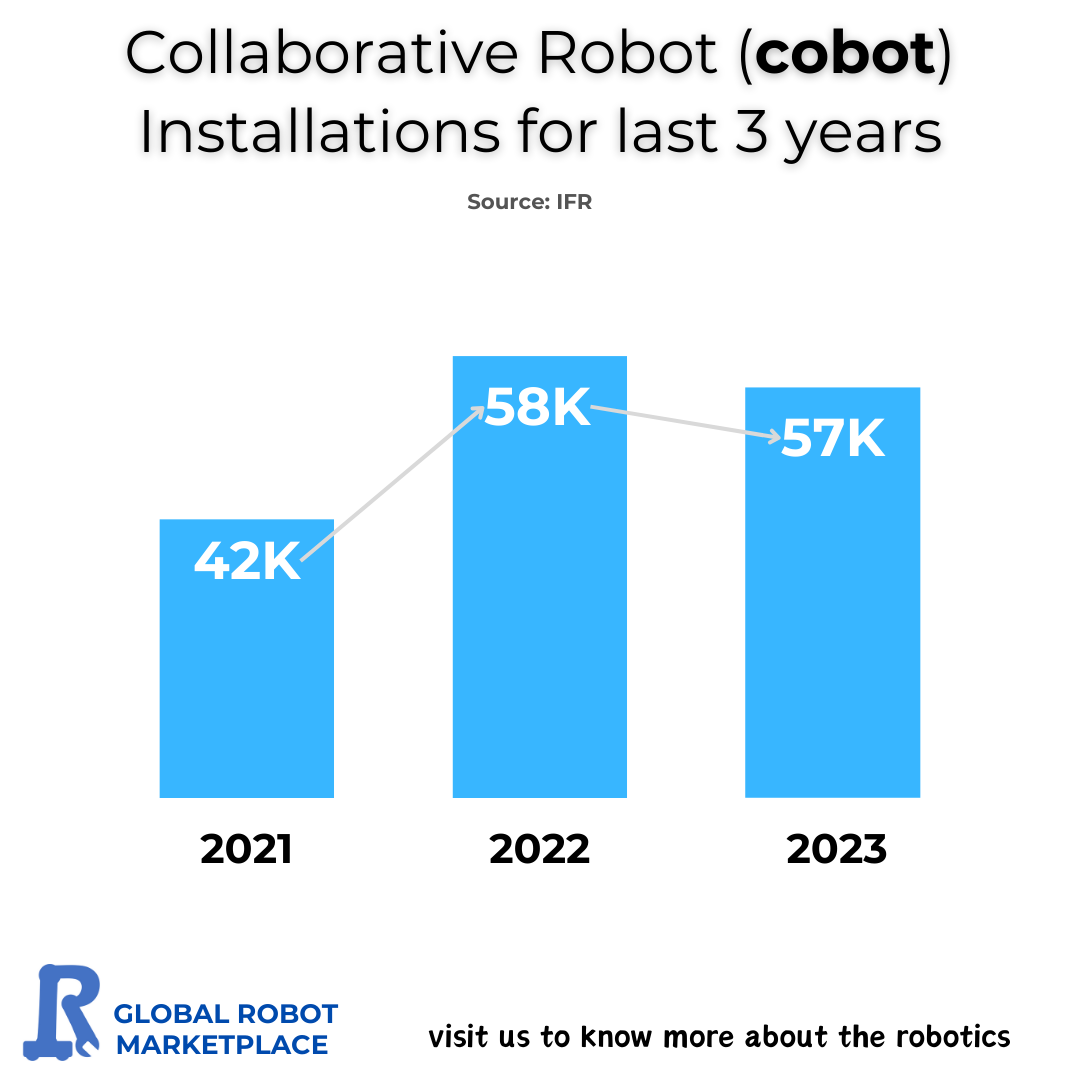
In recent years, collaborative robots or "cobots" have become an essential part of automation strategies across industries worldwide. Cobots are designed to work alongside human workers, enhancing productivity and reducing the physical strain on employees. The International Federation of Robotics (IFR) provides annual data on cobot installations, shedding light on global trends in robotics and automation. According to the IFR, the number of cobot installations saw a noticeable increase from 2021 to 2022, followed by a slight decline in 2023. Here’s a closer look at the trend over the past three years, as illustrated in the image above.

2021: Modest Beginnings with 42,000 Installations
In 2021, approximately 42,000 cobots were installed worldwide. This year marked a steady yet moderate start for cobots as companies increasingly recognized their benefits. Many industries, including manufacturing, warehousing, and logistics, began adopting cobots to enhance efficiency and adapt to the demands of a global labor shortage. The steady rise in cobot popularity aligned with the broader adoption of automation to address operational challenges.
2022: A Significant Surge to 58,000 Installations
2022 saw a substantial 38% increase in cobot installations, reaching 58,000 units. This surge in adoption could be attributed to several factors:
- Technological Advancements: Improved safety features, ease of programming, and versatility made cobots an attractive investment.
- Pandemic-Driven Automation: The COVID-19 pandemic accelerated the adoption of automation to reduce human contact, enhance productivity, and address the demand for social distancing in workplaces.
- Increased Industry Awareness: As industries witnessed the advantages of cobots, they became more willing to integrate them into their operations, even beyond manufacturing, reaching sectors like healthcare, education, and retail.
2023: A Slight Decline to 57,000 Installations
In 2023, the number of cobot installations slightly declined to 57,000 units. This slight decrease might be due to a combination of market saturation in early adopter industries and global economic challenges. The recent economic uncertainties may have made some companies cautious about new investments, impacting the growth of cobot installations. However, with the installation count close to that of 2022, the demand for cobots remains strong.
Key Takeaways and Future Outlook
The data presented in the IFR report indicates a robust, though slightly fluctuating, demand for cobots in recent years. As industries continue to explore efficient and adaptable solutions for automation, cobots are expected to play a crucial role in the future. With technological advancements, lower barriers to entry, and growing applications across various sectors, the cobot industry is likely to see further growth in the years to come.
Conclusion
Collaborative robots are transforming industries by working harmoniously with humans, creating safer and more efficient work environments. Despite minor fluctuations, the steady trend in cobot installations over the last three years highlights their rising importance in the automation landscape. For more insights and detailed information on robotics, visit the Global Robot Marketplace, your go-to source for all things robotics.
